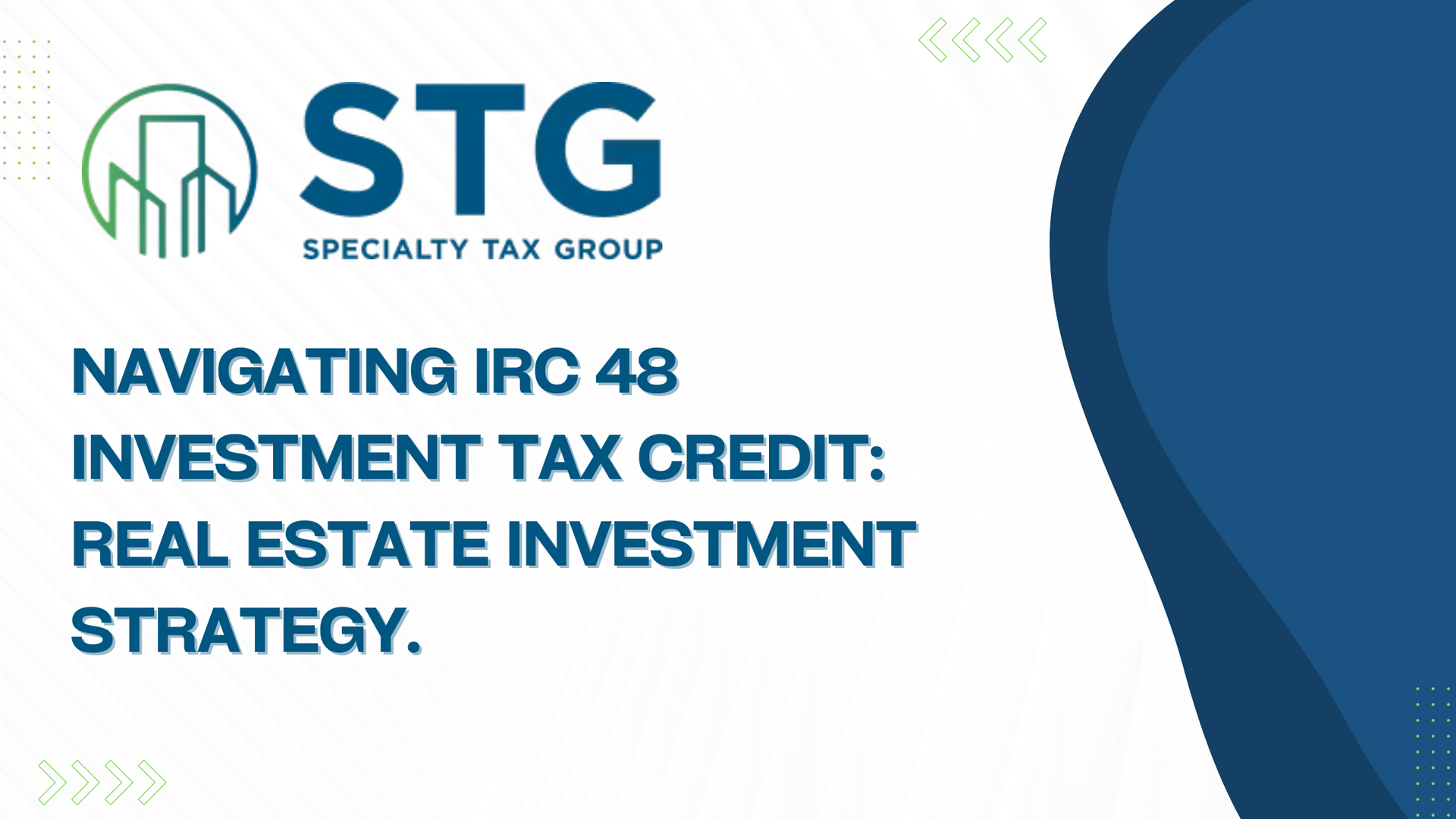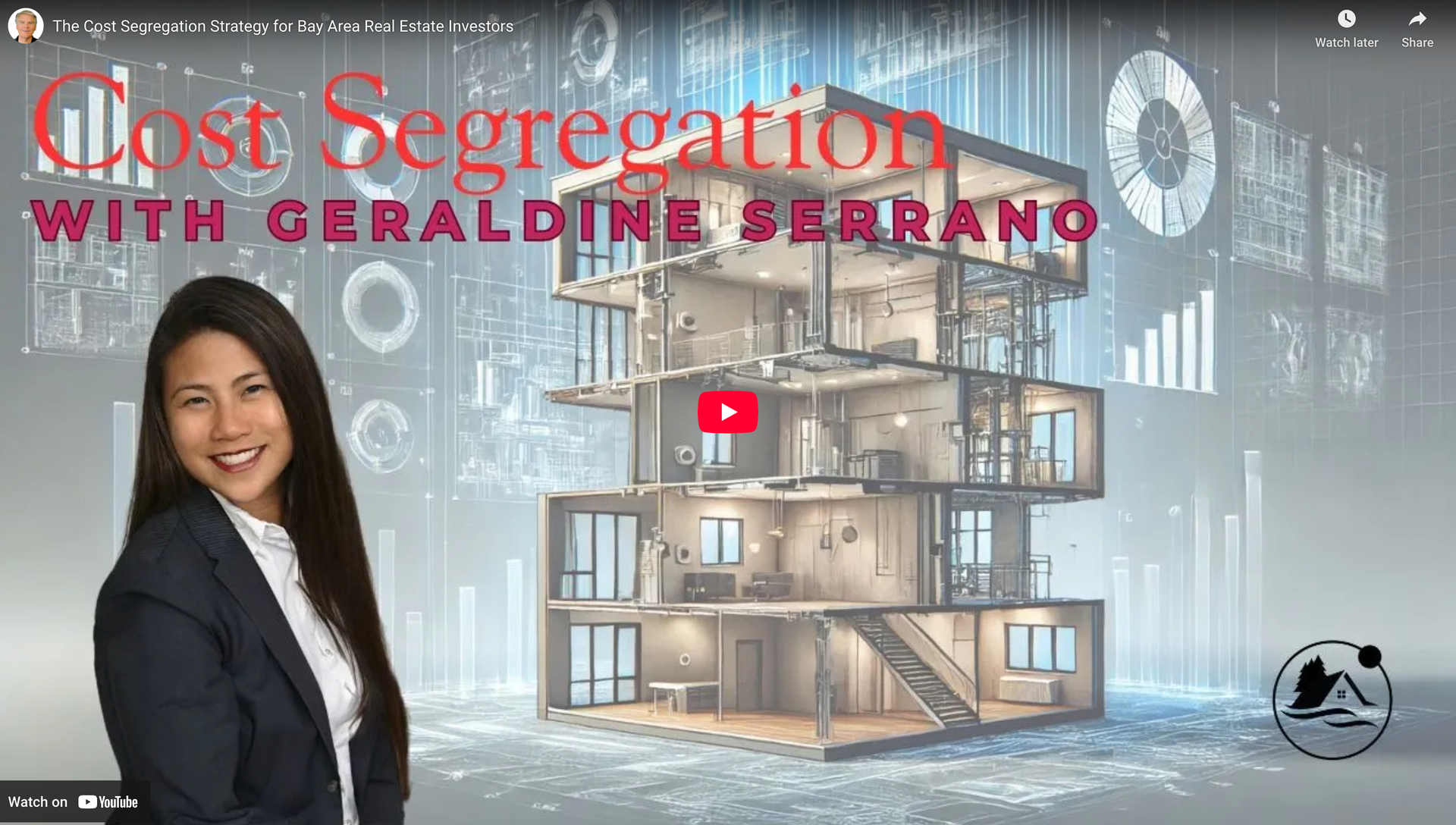This blog post has been researched, edited, and approved by John Hanning and Brian Wages. Join our newsletter below.
Newsletter Form

Cost segregation can provide big tax benefits, especially for savvy real estate pros or investors actively managing their properties. Imagine you just purchased a building for $1 million. By thoroughly analyzing costs, you could immediately deduct up to $400,000. This smart move could effectively reduce the actual cash from your wallet by up to 70%. That significantly increases your investment's profitability from the start.
Bonus Depreciation Changes
For tax year 2023, bonus depreciation has phased down to 80% and will decrease to 60% in 2024, with further decreases until its sunset in 2027. This change in bonus depreciation rates can impact the tax savings generated through cost segregation studies, so staying updated on the latest percentages is key.
Inflation Reduction Act of 2022
The Inflation Reduction Act, passed in 2022, extends taxpayer eligibility for energy-efficient construction credits through 2032. It also modifies the amounts and requirements for credits like the Section 179D deduction for energy efficient commercial buildings and the Section 45L credit for energy efficient home improvements. Understanding these updated incentives can help maximize tax savings.
Upcoming Tax Law Changes
Proposed legislation like the "Tax Relief for American Families and Workers Act of 2024" could impact 2023 tax returns for businesses and real estate owners. If passed, the act may extend 100% bonus depreciation for tax years 2023–2025. Closely monitoring major tax law proposals like this can help real estate investors capitalize on beneficial policies.
Do I Qualify for a Cost Segregation Study?
If you're mulling over whether you're eligible for a cost segregation study, you're not alone. Many are unaware that these studies aren't exclusive to a select few; they can offer massive savings to:
- Corporations
- Partnerships
- Trusts
- Individuals
who have purchased, constructed, or renovated real estate within the past 15 years.
Residential and non-residential commercial properties are prime candidates for cost segregation studies. These analyses are not limited to traditional office buildings or apartment complexes; they also apply to specialized facilities such as:
- Manufacturing plants
- Research and development centers
By reclassifying certain assets into shorter depreciation schedules of 5, 7, and 15 years for personal property and land improvements—instead of the standard 27.5 or 39 years—you can accelerate depreciation deductions, thereby reducing federal and state income taxes significantly.
If you possess a property with associated tax liabilities then today is your lucky day - you likely qualify for Cost Segregation Study benefits!
Engineered Documentation Approaches
Our specialists in cost segregation utilize cutting-edge engineered documentation techniques to create detailed reports that stand up to scrutiny. While the IRS has established criteria distinguishing personal from real property assets—including specific systems like electrical and lighting—the agency does not prescribe a uniform process for these studies. However, presenting precise and well-substantiated data can streamline IRS reviews and help you secure your deductions more swiftly.
Experts commonly employ robust methodologies in their studies such as:
- The detailed engineering approach
- Survey approach
- Residual estimation methodology
- Sampling technique
—all designed to withstand IRS examination while maximizing your tax benefits.
Cost Segregation “Pre-Rehab”
Conducting a cost segregation study before embarking on property rehabilitation sets a clear benchmark for your original purchase. This proactive step simplifies compliance with IRS regulations post-rehab by providing clear distinctions between old and new assets. With detailed receipts and invoices documenting what has been replaced or improved, claiming bonus depreciation becomes markedly straightforward—positioning you favorably when it's time to file taxes.
When and How Often Should I do a Study?
Timing is crucial with cost segregation studies. Ideally, they should be performed before any renovations take place so that an engineer can accurately capture the original state of the property. This baseline is essential when applying rules related to bonus depreciation, partial disposition elections, or repairs during subsequent tax filings. Conducting these studies at strategic intervals ensures that all necessary documentation is available for optimal tax deduction outcomes.
With over two decades of experience and more than 30,000 studies under our belt, our team possesses the expertise required to reclassify building components in accordance with IRS guidelines and allocate indirect costs effectively. You can trust us to navigate this process smoothly on your behalf.
Our tailored 5-step approach ensures that every aspect of your property is meticulously analyzed:
- The Detailed Engineering-Based Cost Approach
- The Detailed Cost Estimate Approach
- The Survey Approach
- Residual Estimation Approach
- Sampling Approach
Each step is designed to uncover potential tax savings across various aspects of your property—from tangible personal assets to intricate land improvements—which can often be depreciated over a beneficial 15-year schedule rather than the extended periods traditionally applied to real estate assets.
Remember that cost segregation studies are not only about immediate tax relief—they're an investment in the long-term financial health of your real estate portfolio. While the cost of conducting such an analysis varies based on property size and type—ranging from $5,000 to $15,000—the potential savings could dwarf this initial outlay many times over.
Common Questions About Cost Segregation for Your Property
Start Your Cost Segregation Study Today!
If you're looking to maximize your investment returns through astute tax strategies, exploring the possibility of a cost segregation study could be one of the most profitable decisions you make this year.
Ready to get started on your cost segregation study? Reach out to our experts on our website for
a free-cost segregation quote.





